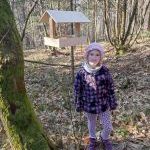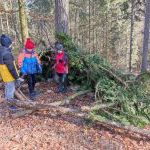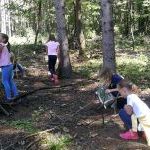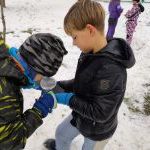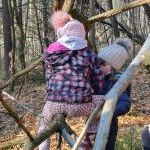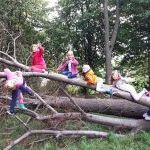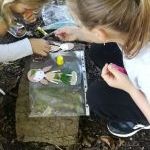Forest kindergartens & schools
The main purpose of the project is to encourage schools and kindergartens to maximise the use of the local natural environment for educational purposes. Children and teachers visit the natural environment on a regular basis - at least once a month in schools and once a week in kindergartens. Forest school teachers run activities that enable children 'to get back to nature'. They explore how to live and think more like we used to in the past, but which has largely disappeared with modern lifestyles. Forest kindergartens or schools bring to children and teachers the following benefits: new learning opportunities, skills for life, more self confidence to children, creativity and a positive learning atmosphere.
Website
Institute of Forest Pedagogues website
Useful links
The Slovenian Forestry Institute
Country
Documents to download
The Forest School Association supports forest school in the UK
Media
Photos: Gombač T., Petelin A.,
* TOP TIP *
'Move the classroom outside for the day and link your lessons to the natural world. Write a poem about the flowers, measure the height of trees, or draw the birds in the sky'
How is the project linked to climate change and sustainability?
Children and teachers in the project learn about natural ecosystems, and are introduced to learning approaches in nature, focusing on Slovenian forests, which cover sixty percent of Slovenija. A forest has a number of functions: it preserves biodiversity, mitigates climate change, is important for the retention of water, is a place for relaxation and recreation, and much more. To children from forest kindergartens and schools all these functions are presented in a clear and understandable manner. Children understand that our planet needs clean, healthy forests for retaining the atmosphere and soil as it is. They see that without healthy nature all living creatures can´t survive in the long term. They learn to respect the nature as a vital part of our life.
Who is involved?
The Forest Pedagogy Institute with its Network of Forest Kindergartens and Schools support the teachers and children. It also involved the Forestry Institute of Slovenija and the project was supported from European Agricultural Fund for Rural Development and Local Activity Group The Heart of Slovenia.
How are the participants involved?
The Forest Pedagogy Institute runs all the activities. The institute’s activity focuses on teaching and educating children and the professional teaching staff about natural ecosystems. It introduces them to pedagogical approaches in nature, focusing on Slovenian forests. The Institute's staff also carry out scientific and research activities, writing academic and media articles. They have created a manual called 'Invitation into a Forest of Happy Children' and prepare professional guidelines for outdoor education.
The Network of Kindergartens and Schools has been active from 2012 and they now includes 138 schools or kindergartens. Slovenija is becoming an example of good practice for other European countries where their work is presented (conferences in Germany, Scotland, Croatia). The network encourages creativity, innovation, curiosity, cooperation and excellence. Their mission is that a walk in the forest, or to nearby rivers and meadow, should become part of our life. The Pedagogical Faculty at University of Ljubljana encourages young teachers to see a nature as a vital part of the learning environment for children. The Forestry Institute of Slovenija hold workshops workshops together with Forest Pedagogy Institute and runs a 'Forest of Experiments' for kindergarten and school teachers and children.
Key steps:
Becoming forest kindergarten and school can involve some simple actions:
- Moving the class outside for educational activities, even using the school grounds if you're not close to a forest
- Regularly taking a group of children out to the forest and creating a forest playground
- Learning songs and poems about trees and meadows
- Using the forest as a learning tool for subjects like maths and science activities
- Teaching children the ABCs of nature and using the environment as inspiration for written work
- Cooking and creating art outside
- Helping children achieve their personal and social goals
- Creating a network of local natural environments for learning
- Making learning practical, memorable and fun!

